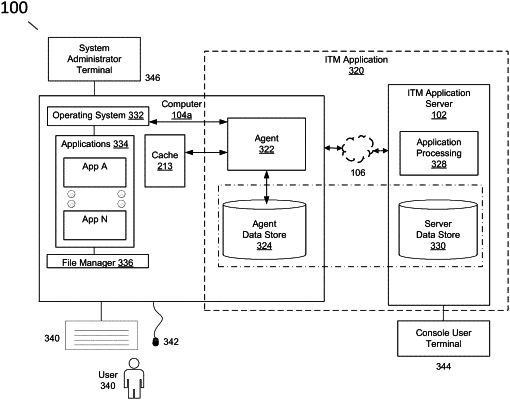| CPC H04L 67/568 (2022.05) [H04L 9/0643 (2013.01); H04L 67/01 (2022.05); H04L 67/306 (2013.01); H04L 67/535 (2022.05)] | 26 Claims |

|
1. A computer-based method of reducing data transmissions from a computer to a remote network destination, the computer-based method comprising:
receiving an indication, at an agent on the computer, that a recent user activity has occurred at the computer, wherein the indication comprises data relevant to user's context when the user activity occurred, wherein the data relevant to the user's context when the user activity occurred comprises an identification of one, and only one, visual element on a display screen of the computer that was in-focus during the recent user activity or that became in-focus as a result of the recent user activity, wherein the in-focus visual element is one that has been selected by a human user;
determining, with the agent, whether the data relevant to the user's context when the recent user activity occurred indicates that the visual element that was in-focus during the recent user activity or that became in-focus as a result of the recent user activity is different than an in-focus visual element associated with an immediately prior user activity, indicating a change in user context relative to the user activity at the computer immediately prior to the recent user activity; and
transmitting data relevant to the recent user activity from the computer to the remote network destination or not transmitting the data relevant to the recent user activity from the computer to the remote network destination depending on an outcome of the determination.
|